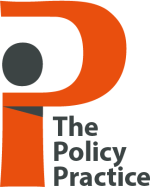Power Analysis: a practical guidance - SIDA (2013)
Published
The overall aim of this guide is to offer practical advice and tools for practitioners and development organisations who are wanting to bring an understanding of power into development cooperation. Sida offers an approach to power analysis that can be used to understand how power relations may reinforce conditions of poverty and marginalisation, and to develop strategies for responding and mobilising alternative forms of power that can address inequalities. Specifically, this guide integrates methods of power analysis into daily work and uses them to enhance the cooperation process at key stages. The guide is organised as follows:
- Why Power Analysis? This section introduces power analysis and how it can be used to support cooperation policies.
- Deciding to do power analysis: This section reviews what to consider in deciding the purpose and timing of power analysis and the various ways in which the process can build understanding of the country context.
- Doing power analysis: This section is a step by step guide to key stages, such as clarifying the purpose; defining core issues and questions; and identifying concepts and methods.
- Concepts and frameworks of power: This is a reference section with a menu of relevant concepts and frameworks for analysing different forms, sources and positions of power. The ‘powercube’ framework is introduced with its dimensions of spaces and levels of power, and Political Economy Analysis is introduced.
